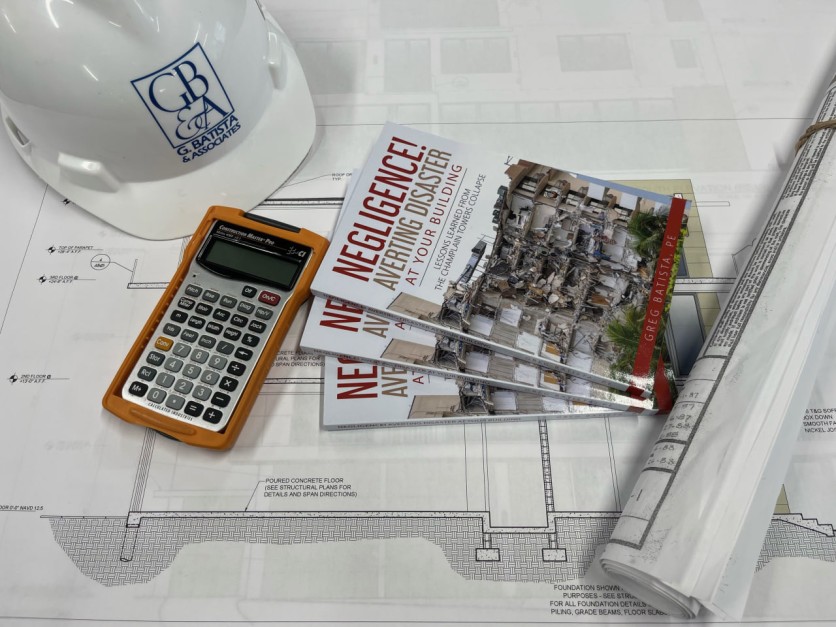
In recent years, a startling pattern of ignored warnings and overlooked maintenance needs, safety standards, and codes have emerged in the construction industry, often with catastrophic results. The increasing number of building and bridge collapses has sparked a nationwide discussion about safety standards, highlighting the deep-rooted issues plaguing the construction and engineering industries.
Among those who have expressed serious concerns is renowned structural engineer Greg Batista, P.E. With over 30 years of experience in structural engineering and construction, Batista has been a vocal advocate for strict adherence to safety standards, building codes, and regulations.
As the founder of the G. Batista Engineering & Construction company, His expertise is particularly relevant when considering the recent infrastructure disasters that have claimed numerous lives and caused extensive damage, leaving the nation in a state of shock, namely the Surfside, Florida Champlain Tower collapse, the crumbling of a century-old building in Iowa, and the Fern Hollow bridge collapse in Pittsburgh. In each instance, warning signs were overlooked, and safety was compromised.
Shedding light on these oversights, Batista states on his personal linkedin page, "These are not mere hiccups in the system, but serious lapses that can and do lead to disastrous outcomes. They represent a systemic failure, born out of lack of maintenance, design and/or construction mistakes, and lax oversight."
A closer examination of the incidents paints a worrying picture. In the case of the Surfside condo collapse in 2021, 98 individuals lost their lives while many more were displaced. Investigations have preliminarily revealed that the building failed to comply with the original building codes and standards. Notably, the building showed signs of corrosion, misplaced reinforcement, and the placement of heavier plant containers than those in the original plans, leading to "critically low margins against failure".
On Batista's Youtube he emphasizes that such failures underline the necessity of regular and thorough inspections to promptly detect and rectify such issues. "Construction is not just about erecting structures," says Batista. "It's about ensuring these structures stand the test of time and protect their occupants. Now more than ever, it's crucial to implement solutions that involve immediate fixing and long-term maintenance planning which in turn contribute to long-term resilience."
The chilling, partial collapse of the apartment building in Davenport, Iowa, is yet another example of industry negligence. Astonishingly, a structural engineer's report indicated an imminent risk of the building crumbling days before the collapse. City officials and the building's owner were warned about the unstable parts of the building.
Still, they did not order an evacuation, relying on the engineer's assurances that the building remained safe. This oversight resulted in three people missing and feared dead.
In Pittsburgh, the recent collapse of the Fern Hollow Bridge, was already deemed structurally deficient by the NTSB having flagged structural deficiencies more than 15 years prior to the collapse. Batista has stressed that delaying maintenance is a gamble with lives, especially considering the current state of our nation's infrastructure.
"The American Society of Civil Engineers has given the United States an almost-failing grade concerning the general state of its infrastructure. They've reported that 1 in 9 bridges are structurally deficient, requiring substantial repairs or complete replacement. If we want to prevent more tragedies, we must act immediately."
Batista has shown on many posts in his instagram account that safety cannot be compromised. Batista stresses that structural inspections should be regular, thorough, and followed by immediate action. Warning signs should never be ignored, and every report of possible structural weakness must be taken seriously. Every construction project must meet building and safety codes without exception. He emphasizes the need for transparency and communication between engineers, city officials, and residents.
"We must be proactive rather than reactive," says Batista. "City officials especially need to continue to take these issues seriously. But as engineering and construction professionals, we must collectively take decisive actions rather than wait for disasters to strike."
For Batista, negligence is a particularly sore spot, as he has issued multiple warnings regarding countless structures regarding engineering and construction defects. In fact, he was one of the experts who had repeatedly tried and failed to draw attention to the structural issues of the Champlain Tower prior to its untimely collapse.
The incidents in Florida, Iowa, and Pittsburgh are painful reminders of the price paid for ignoring expert advice and safety standards. Batista argues that the future lies in stricter adherence to safety standards. He underscores that the cost of prevention pales compared to the price of disaster. "The cost of ignoring these signs is simply too high. It's high time the industry takes the warnings seriously and not only prioritizes safety over speed or cost, but to also seriously consider maintenance as an extremely important factor. Only then can we hope to prevent such tragic incidents in the future.

![Apple Watch Series 10 [GPS 42mm]](https://d.techtimes.com/en/full/453899/apple-watch-series-10-gps-42mm.jpg?w=184&h=103&f=9fb3c2ea2db928c663d1d2eadbcb3e52)


